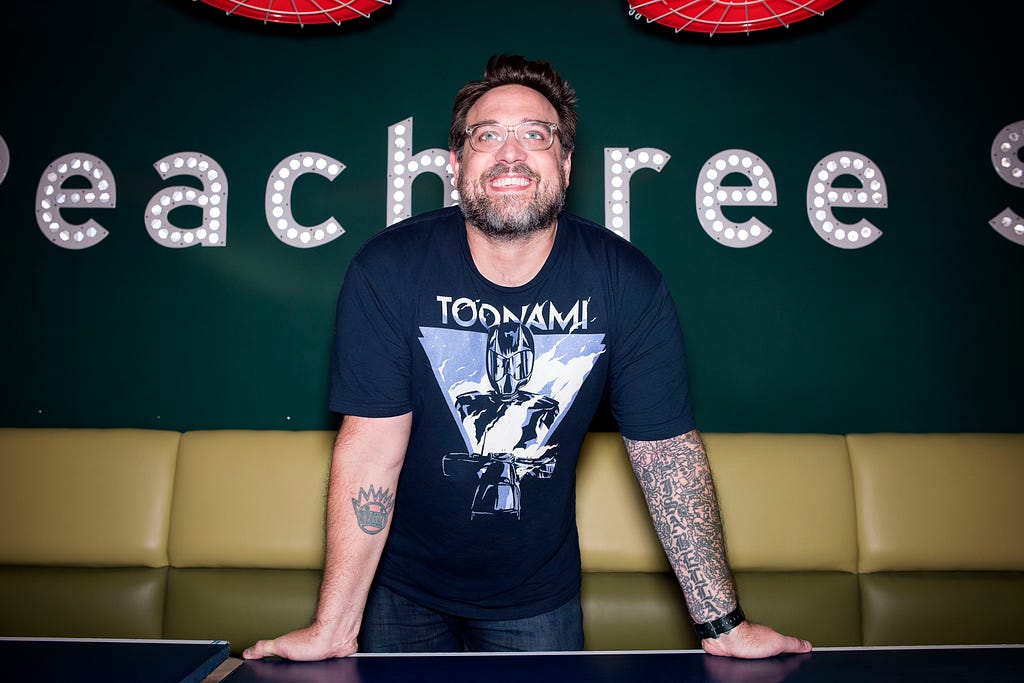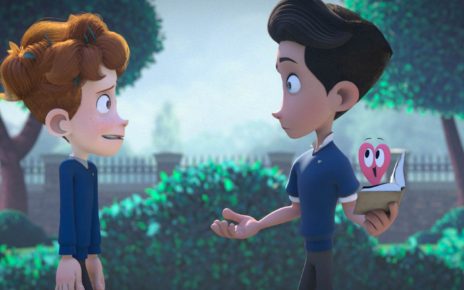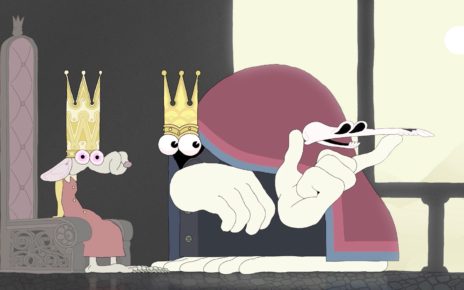Session 01: Asteroid Blues

For one month, The Dot and Line is publishing essays, interviews, and discussions about each episode of Cowboy Bebop, which turns 20 this April.
When Cartoon Network brought Cowboy Bebop to Western audiences in 2001, a few years after it enthralled audiences in Japan, there was nothing else like it on television. These days, its DNA is everywhere, from the grim philosophies infusing big cable genre dramas like Westworld to the near-mimicry of Archer’s intro credits, yet there’s really still been nothing truly like it on television, Joss Whedon’s Firefly be damned. We chatted with Jason DeMarco, senior vice president and creative director for Adult Swim, about the importance and influence of Bebop’s first episode, “Asteroid Blues,” and what it was like to bring it to the air.
Why did Cowboy Bebop seem like a good bet for an American audience? What made Cowboy Bebop the right choice for the first anime title to bring to Adult Swim?
Cowboy Bebop was heavily influenced by Western design, music, and classic noir storytelling. Those elements, plus the structure of the show — stand-alone episodes followed by “story arc” episodes, much like The X-Files, or other U.S. shows on the air at that time, made the show seem like something that could work for a U.S. audience.
What were the biggest challenges in securing the show for Adult Swim? Were there any?
At that time (late ‘90s), we at Cartoon Network had a very cordial relationship with Bandai, so the show wasn’t difficult to secure from them at all. The harder part was selling our network on the idea that a show this dark and fatalistic could be shown on Cartoon Network. (Remember, this is pre-Adult Swim.)
I hesitate to use the term “instant classic,” but there was definitely an awareness that the show was something special right out of the gate.
When that first episode, “Asteroid Blues,” aired, what do you think it brought to American television that was entirely new?
So many things. An animated, sci-fi Western noir starring a team of misfits lead by a depressive anti-hero. Has there been anything like it on TV since? Maybe Firefly, which clearly owes a debt to it? Besides its obvious quality and thoughtfulness of execution, there still isn’t much room in the U.S. for “adult” drama in animation. For that reason alone, it popped out from the overall TV landscape.

What was the reception like? When and how did you know you had a bona-fide hit?
The reception from a general audience was muted. It did fine, but wasn’t a huge hit or anything. The reception from anime fans for the show was already huge. I hesitate to use the term “instant classic,” but there was definitely an awareness that the show was something special right out of the gate.
The reason we kept airing it over and over wasn’t because it pulled in massive numbers, although it never did poorly in ratings. We ran it because primarily, Mike Lazzo, who runs Adult Swim, loved it so much!
What are the biggest changes you think Cowboy Bebop contributed to Cartoon Network, and to the American animation industry as a whole?
I would say Cowboy Bebop was one of several important bricks that laid the foundation for Adult Swim’s existence, and a key early show for Adult Swim as an animated block of programming designed to bring people something different than they would see anywhere else. As far as changes to the industry as a whole, Bebop was a key example to distributors and creators that adult storytelling can have a place in animation in the U.S.

Thanks for reading The Dot and Line, where we talk about animation of all kinds. Don’t forget to for this article and follow us on Twitter and Facebook.





